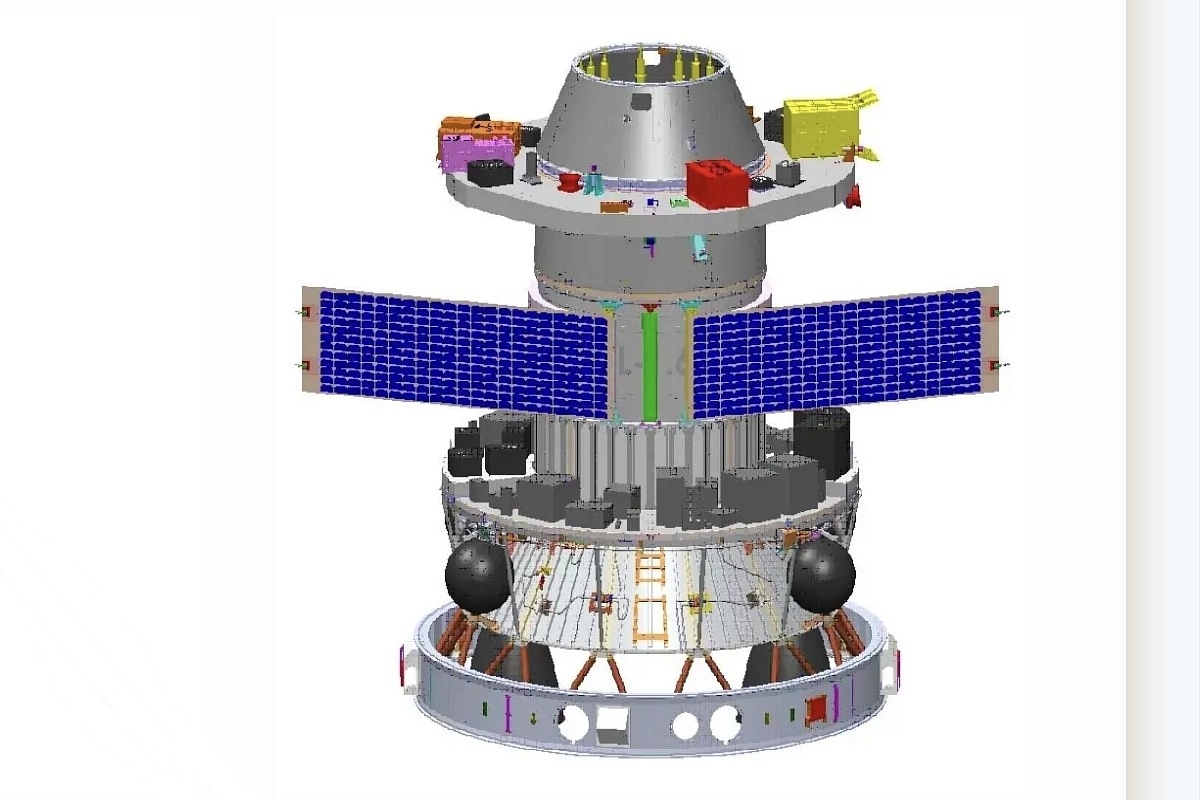Science
India's Low-Cost Star Sensor Successfully Tested On ISRO's PSLV Orbital Experimental Module

PSLV Orbital Experimental Module (POEM) (Pic Via ISRO)
ISRO had recently launched a cost-effective star sensor developed from off-the-shelf components by scientists at Indian Institute of Astrophysics (IIA) onboard its PSLV C-55 rocket.
In its first-ever space test, the sensor, which is mounted on the PSLV Orbital Experimental Module (POEM), is performing well, and the initial data has now validated its design as well as its function, according to a Science and Technology Ministry release.
Scientists at Indian Institute of Astrophysics (IIA) had developed the StarBerrySense payload, which was launched onboard PSLV C-55 on 22 April.
Developed as a low-cost sensor to rapidly calculate where the satellite is pointing, the innovative device is being tested in space for the very first time.
The astronomers from the Space Payloads Group of IIA have announced that the StarBerrySense has surpassed expectations by withstanding harsh conditions in space.
Not only is it functioning properly, but initial data shows that it is able to calculate the pointing direction.
Accurate information of where a satellite is being pointed at any given time is crucial for any space mission. With there being several ways to do this, a star sensor is the most effective way to provide highly accurate information about a spacecraft’s orientation.
The start sensor designed by the Space Payloads Group at IIA is capable of finding its pointing direction in space by identifying the stars in its field of view, the Ministry of Science and Technology said on Monday (1 May).
“This payload is built around the well-known minicomputer RaspberryPi, and the electronics and software were designed in-house,” said Bharat Chandra, the technical lead of the project and a PhD student at the Indian Institute of Astrophysics.
“The advantage of this payload is that it is cost-effective, simple to build, and can be deployed on a wide variety of satellites,” he added.
“StarBerrySense was mounted on ISRO's PSLV Orbital Experimental Module (POEM), which provides a stable platform for our payload to operate from. POEM is a unique initiative by ISRO that utilises the spent fourth stage of the PSLV as an orbital platform for carrying out scientific experiments. It is an excellent opportunity to conduct short-term scientific experiments in space,” said Rekhesh Mohan, the Principal Investigator of the StarBerrySense project.
The primary objective was to assess its survivability and performance in space.
“The flight qualification tests were done at the MGK Menon Laboratory for Space Sciences, located in the CREST campus of the Indian Institute of Astrophysics at Hosakote. Sky imaging tests were conducted at our Vainu Bappu Observatory”, said Binukumar, former visiting scientist at IIA and a member of the StarBerrySense team.
“During the days following the launch, we have verified that StarBerrySense is performing as expected in space,” said Shubham Ghatul, a PhD student in the team.
The main function of StarBerrySense is to image the field of view, correctly identify the stars it sees, and calculate the pointing direction.
Shubhangi Jain, a PhD student in the team, said, “Analysis of the preliminary data has confirmed that the imaging equipment works as expected, and the onboard software is able to calculate the pointing direction.”
“Using the images received from the payload, we are verifying its accuracy by comparing with data from international databases,” Mahesh Babu, an electronics engineer with the team, added.
The team also comprised of DST Woman-Scientist Margarita Safonova and Visiting Professor Jayant Murthy.
Support Swarajya's 50 Ground Reports Project & Sponsor A Story
Every general election Swarajya does a 50 ground reports project.
Aimed only at serious readers and those who appreciate the nuances of political undercurrents, the project provides a sense of India's electoral landscape. As you know, these reports are produced after considerable investment of travel, time and effort on the ground.
This time too we've kicked off the project in style and have covered over 30 constituencies already. If you're someone who appreciates such work and have enjoyed our coverage please consider sponsoring a ground report for just Rs 2999 to Rs 19,999 - it goes a long way in helping us produce more quality reportage.
You can also back this project by becoming a subscriber for as little as Rs 999 - so do click on this links and choose a plan that suits you and back us.
Click below to contribute.
Latest